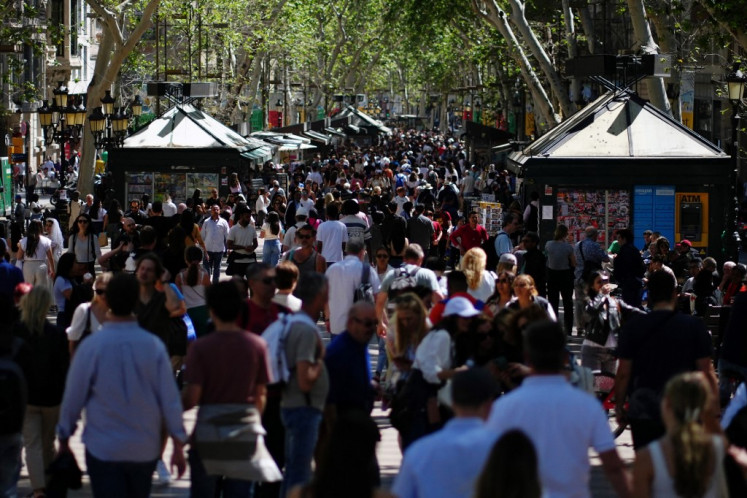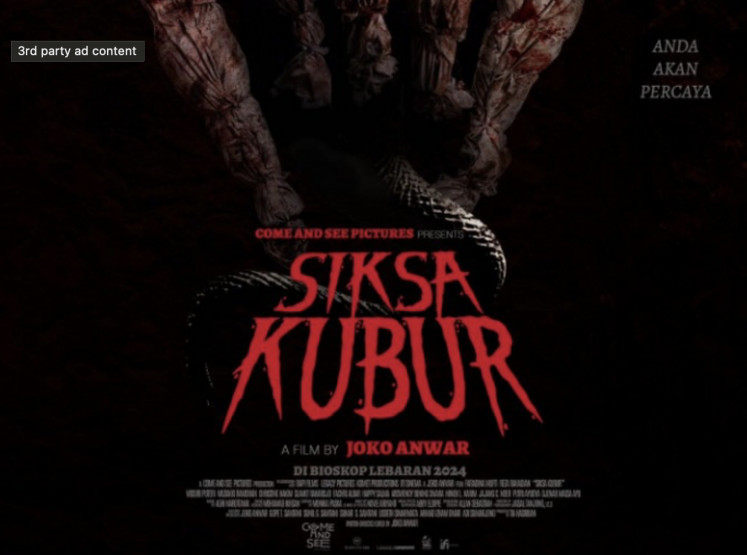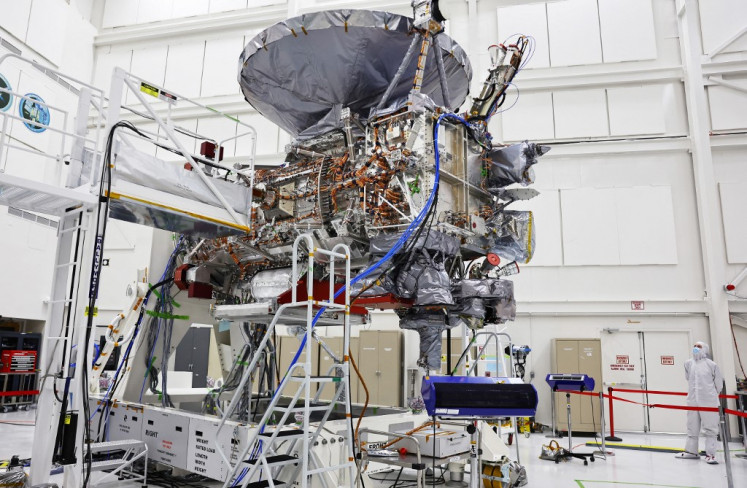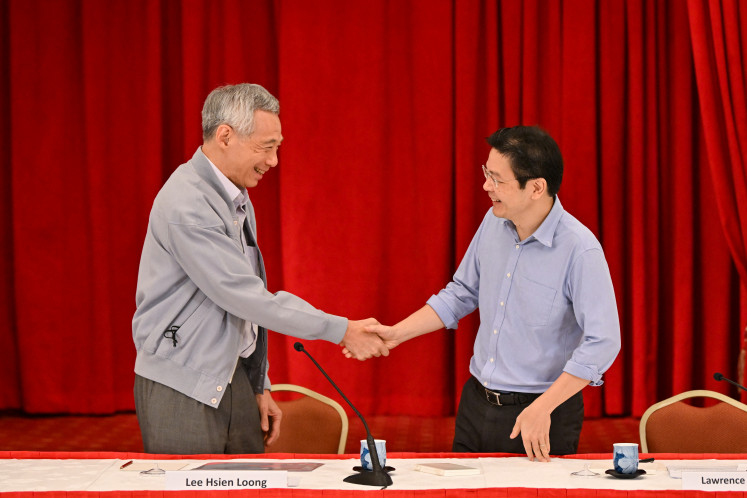Dancing to make a change
Disabled and able-bodied artists partnered up to change the public’s perception about people with disabilities at the Bebas Batas Festival (Borderless Festival) in Jakarta.
Change Size
 Breaking barriers: Arif Setyo Budi (front right), a breakdancer who lost his right leg in a work accident, performs alongside a dancer from the CANdoDANCE group. (The Jakarta Post/A. Kurniawan Ulung)
Breaking barriers: Arif Setyo Budi (front right), a breakdancer who lost his right leg in a work accident, performs alongside a dancer from the CANdoDANCE group. (The Jakarta Post/A. Kurniawan Ulung)
A
rif Setyo Budi thought that being a “b-boy” or breakdancer was cool. His interest in breakdancing grew stronger after he watched the street dance-themed movie You Got Served, which eventually led him to join a breakdance community in Malang, East Java, in 2005.
His b-boying days seemed to be over in 2007 after an accident at a plastic factory, where he worked as a machine operator. Arif’s right leg got caught in one of the machines and a metal component crushed it.
The accident took his leg away, but his passion for dancing lives on. With a crutch under his right arm, Arif made a surprise comeback at his breakdance community in 2008. Knowing that he was still eager to dance, his friends helped him practice with one leg.
“In Indonesia, I am the first and only one-legged breakdancer,” the 31-year-old said.
“I believe that nothing can limit us. If there is a limit, it is actually created by ourselves,” added Arif who has won several regional breakdancing competitions.
He recently showed off his cool moves at the Bebas Batas Festival (Borderless Festival), the country’s first arts festival for disabled artists, which was held at the National Gallery in Jakarta from Oct. 12 to 29.
The festival aims to promote disability rights as well as highlight the work of artists with special needs.
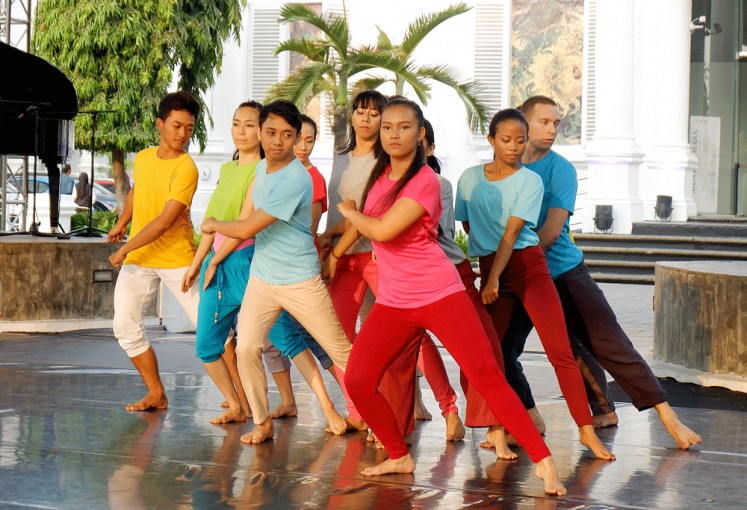
Arif is part of the CANdoDANCE dance group, which also includes four deaf and seven able-bodied dancers. The group performed a modern dance choreographed by Susanna Recchia who is no stranger to such collaborations.
She is the rehearsal director of the Candoco Dance Company, a London-based group of disabled and able-bodied dancers that was founded in 1991.
During its performance, CANdoDANCE danced to “Rapsodia Nusantara No. 15” by renowned composer Ananda Sukarlan.
Like some of the dancers, Ananda lives with a disability. He was diagnosed with Asperger syndrome, a type of autism spectrum disorder characterized by significant difficulties in social interaction and nonverbal communication.
Ananda only used his left hand when playing “Rapsodia Nusantara No. 15” — not to impress the audience, but simply to prove that the piano is accessible to all, including those with disabilities.
“In music, if you have one hand only, it does not mean that you cannot play a piano,” the maestro said. “If you close your eyes and listen to this, you will not realize that [‘Rapsodia Nusantara No. 15’] is played using only my left hand.”

The festival was jointly organized by British Council Indonesia, the Art Brut Indonesia Foundation and Ballet Indonesia Foundation (Ballet ID).
“We believe that dance is for everyone and we want it to be more accessible,” said Ballet ID cofounder Mariska Febriyani.
British Council Indonesia director of arts Adam Pushkin sees the festival as a creative platform for disabled artists to offer a new perspective to Indonesians that the disabled can do what the able-bodied can also do.
CANdoDANCE dancer Marta Hardy, who is deaf, hoped that festival would make people realize that impaired hearing does not prevent the afflicted from hitting the dance floor.
“I once tried to join a hip-hop dance community in Jakarta, but I got rejected. The teacher told me that I would never be able to dance due to my hearing impairment,” the 26-year-university student recalled.
“I cannot hear music at all. But, when I am wearing a hearing device, I can feel the music’s rhythm and vibration. Therefore, [listening to] music has never been a problem for me” she added.
Marta, who started dancing at the age of 5, said CANdoDANCE was a perfect platform for able-bodied and disabled individuals not only to dance together, but also to understand each other.
Toke Broni Strandby, a Candoco dancer who is missing the lower part of his left arm, hoped that Candoco’s presence at the festival inspired people to reach their potential.
“We are trying to open up an environment where everybody should be who they are and be the best version of themselves with or without disabilities.”




